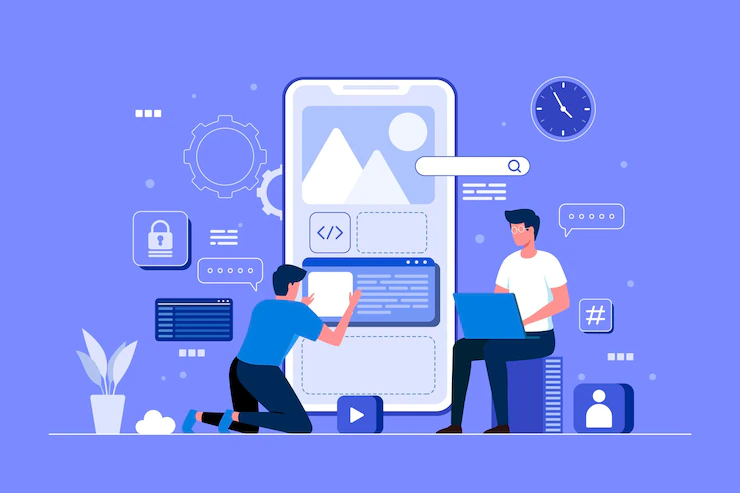How To Optimize The Performance Of Your iOS App?

Last Updated on May 10, 2023 by
It is the responsibility of every app developer to develop a bug-free, user-friendly, and engaging mobile app. And, the development of iOS apps needs extra effort from the developers. The reason will tell you why?
Apple devices are known for their unparalleled performance and superior design compared to their rivals. If you want to cater to the needs of iOS users, ensure that your app responds quickly and performs better. Also, not to be forgotten that the App Store is filled with millions of apps. So, to stand out, your app needs to pack a punch.

What are those? Check it out in this blog.
Tips and tricks for optimizing your iOS app’s performance
Research and recognize the target market
Most app developers tend to fast-track their app development procedure by negating the need to research and recognize the target market and delivering an app that is not required or fails to cater to the end user’s need.
Always have a defined target audience for developing and designing the app by focusing on the needs and preferences of the defined audience for giving the desired result.
Conduct primary research covering data such as demographics like age, gender, financial standing, and relationship status of the users.
The secondary research must cover the data of the existing company and rival analysis for recognizing the behavioral patterns of your target audience. In a nutshell, check their payment mode, whether they scroll or swipe more often? Such questions need to be answered by the research that you conduct.
Use ARC to manage memory
ARC or Automatic Reference Counting, launched by Apple with the iOS version 5, eliminates the most common memory leaks – the vague ones. ARC helps manage the release cycles in your code automatically and saves you the time and effort needed for manually doing it.
Sometimes, app developers tend to forget to add the release call at the code block’s end, and this causes memory leaks. However, ARC saves them for it.
Additionally, ARC helps improve iOS app performance by reallocating unwanted objects. It helps in optimizing the overall app performance.
Launch screen
HIG or Human Interface Guidelines measures the responsiveness of an app by looking at the launch screen of an iOS app. Many developers use the launch screen as branding or adding a loading animation.
For enhancing the effectiveness of your app’s launch screen, make the launch screen look and feel identical to your app’s first screen. Also, never utilize the app’s launch screen for branding or loading, as it may slow down the app. The user may perceive the app to be sluggish.
Avoid adding text on the launch screen so that you don’t need to localize the text for catering to different languages.
Content layout
While building an iOS app, the focus should be on hiding the code behind the app, as you don’t want the end-users to see the code. Show the content and design of the app. The content layout helps in enhancing the UX of the app.
iOS app developers need to make sure the content fits the screen properly since Apple stresses the layout to be perfect. Also, the developers must ensure that the navigation between pages is simple and clear. The design has to be fluid and natural, and the images need to be aligned correctly alongside maintaining a proper size and style of fonts.
Don’t block the main thread
The main thread must be free from all kinds of heavy tasks. It must have the space needed for the UI kit to properly do its work, like- drawing, responding, and managing touches.
If you make the main thread do more than it is supposed to do, then you run the risk of your app becoming unresponsive since the main thread gets blocked. The most common causes of main thread blocking happen when the app performs an input/output operation that includes reading or writing from an external source like the network/disk.
Apple ID code
Just imagine, you develop the application only and are unable to launch it because you have not yet built an Apple ID code. You must assign an Apple ID code to your app right at the beginning stages of the iOS app development process.
By getting this roadblock out of the way, you can launch your iOS app on the marketplace for an annual fee of $100. When looking for iOS app development services in India, ask the developers to assign the ID code to your app. An Apple ID code is linked with the way you sign your code. It gives you the authority to label yourself as the app owner. Also, get this code before the iOS app is delivered to you.
View controllers
State restoration is a tool that helps the user to return to the same user interface they used previously before exiting. If your app is not equipped with state restoration, the last state of the UI will be lost after the background memory of the device is cleared by the end-user. This leads to data loss.
Some apps even display a different user interface from the snapshot shown in the multitasking view. This happens due to the non-implementation of the state restoration mechanism. And this affects the overall performance and user experience of the app.
To counter this problem, the UI kit helps in simplifying state restoration and preservation by handling the loading and saving of the state of the app automatically frequently. The developers must specify app restoration and the data that needs to be restored to the app for this function to work.
Compatibility
Apple rolls out updates to the devices on a timely basis, and the constant updates can affect the app’s performance. Therefore, you have to build an app that works on all iOS devices.
Some people can use the old iPhone while others use the latest iPhone. Thus, to improve your app’s reach, make sure the app is compatible with all iOS devices. If your app is not compatible with all iOS devices, your dream of becoming the next big thing in the iOS app realm will remain a dream and never translate into reality.
Therefore, ensure the app is compatible for offering superior performance. Ask your iOS app development service providerto make your app compatible with a wide range of iOS devices.
Reuse rich objects
A few objects are delayed for introduction – NSDateFormatter and NSCalendar are such models. Nevertheless, you cannot avoid using them, for instance, when you parse dates from a JSON/XML reaction.
For avoiding execution bottlenecks while working with these items, try reusing the objects. Try to add a property to your group or make a static variable. One thing must note that if you are using the latter methodology, the object will be staying in memory while the app is running.
Test the app before launching it
Never launch your iOS app without testing it. Always measure the result, performance, and response of the app. Testing helps in identifying issues and bugs that may not look apparent from normal viewing. If these issues creep into the app, it will cause performance issues and get you into a lot of trouble.
Additionally, take feedback from others for fine-tuning the app so that no problems arise once the app is released in the App Store.
Conclusion
These were the top 10 tips and tricks needed for optimizing the performance of your iOS app. You can also use it as guidelines for iOS app development and stay connected with your online clients 24/7.




